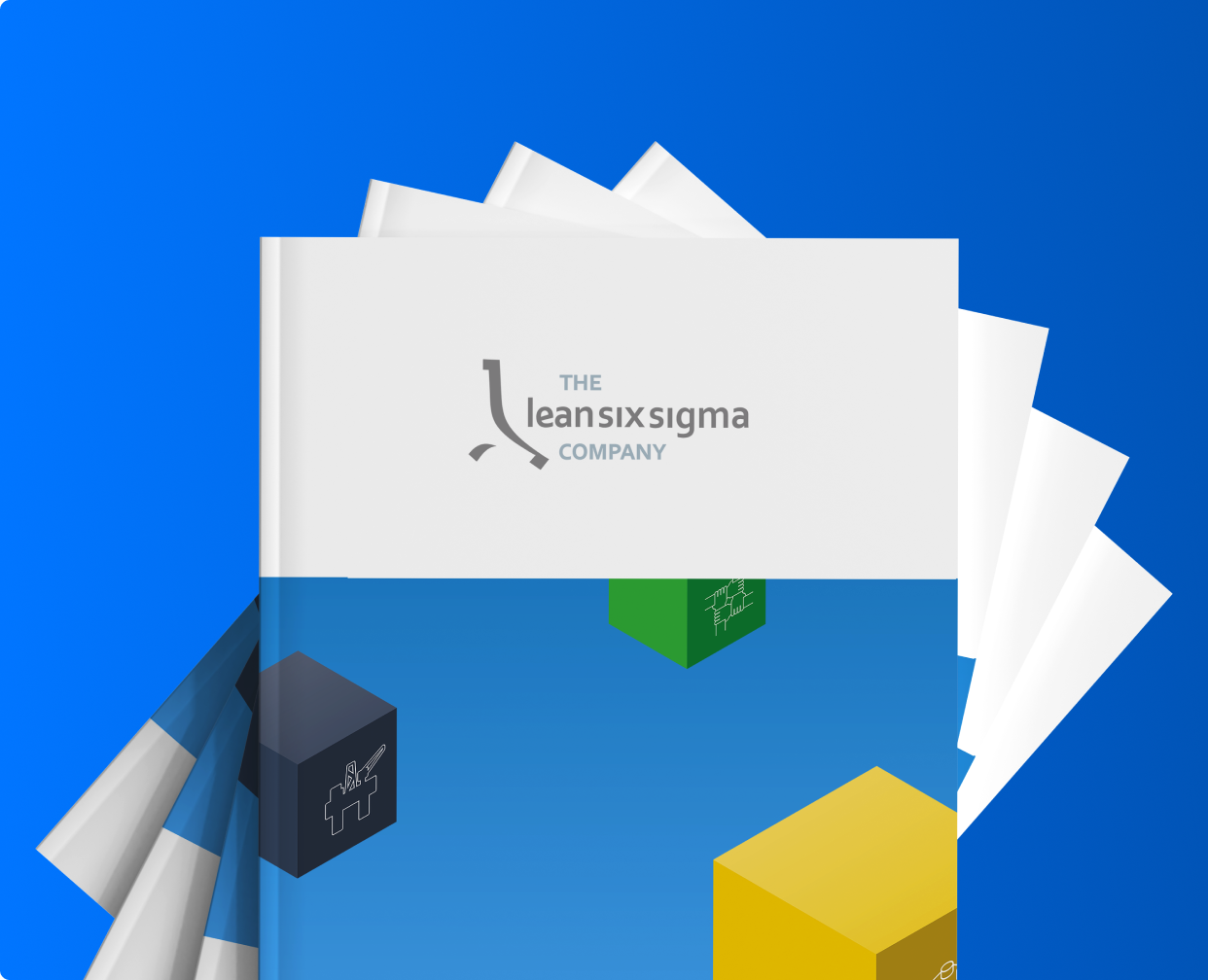
How One Trainer Achieved a Student Project Success Rate of 78% and an ROI of 700%
After some two decades of training people in Lean Six Sigma, we have concluded that one issue hinders nearly everyone we train. Regardless of who is in front of the class, or who populates the classroom, getting students to apply a set of newly-acquired skills during their first project is a universal challenge. It is the transition from ‘learning’ to ‘doing’ that leaves many participants struggling to achieve results right when they are most important.
John Bruns, Master Black Belt Trainer at The Lean Six Sigma Company, noticed this issue and decided to try a different approach. He adopted a more personalized way of coaching which significantly improved the success rate of first-time projects, and now also helps other trainees to put theory into practice.
Out of Sight, Out of Mind
In general, training providers decide on their own training agenda. At The Lean Six Sigma Company, Green Belt trainees attend six tutor-led days. During these days, all the tools and methods relevant to a Green Belt are explained and discussed.
Once this part of the program is over and the theoretical exam has been passed, it is up to the participants to proactively apply what they have learned. The issue with this approach is that this makes projects feel like extra-curricular work for a training that has already been completed. The classroom days are over, people return to their regular schedules, hang the theory certificate on the wall and call it a day.
Where the training provided a clear agenda and path forward, the project signals a full 180 and lay the responsibility for planning etc. squarely with the participant. This is when roadblocks such as time constraints, competing priorities, and distance start to weaken the motivation and energy for the project. What should have been an interesting learning experience begins to turn into a planning headache. Even if they managed such a feat, they would often have to work alone on their project and only receive feedback during scheduled sessions. To make matters worse, these issues also send out a clear signal, making it very difficult to inspire commitment in others involved with the project.
To address these issues specifically, John revamped a part of the training agenda. Instead of the usual six days of training and the project being worked on afterwards, John decided to create a more extensive ten-day program, which adds four mandatory classroom days that have a single objective: working on your project. By making these project days an integral part of the training, and something to be communicated beforehand, it is easier for participants to reserve the necessary time. After all, it is part of the actual program now and justifiable as such with a manager or team lead. This way, trainees no longer need to scrounge for ‘extra’ project time after their training.
Blending Theory and Practice
In practice, John kicks off his trainings with three days of theory discussions just like before. However, these days are now instantly followed up by a fourth classroom day during which trainees focus on taking the first project steps. As these steps are also considered the most difficult for beginners, the extra help is always welcomed.
Having everyone in the same space also means they can share challenges, solutions, and ideas. Seeing others face the same challenges creates a supportive environment; if one trainee is stuck on a project phase (something that’s common for the Define and Measure phases), others can pitch in with their insights, making it easier to overcome obstacles. As an added benefit, this also helps the trainer by organically delegating some of the coaching work onto students rather than placing it squarely on the shoulders of the coach.
“It wasn’t just the trainees who found this new setup more enjoyable, for me as a trainer it was also much more satisfying and fun to work on projects; I could actually see people progress as opposed to hearing about it afterwards in an email”
Real-Time Feedback
John’s method also provides a constant and immediate stream of feedback for each participant; he’s there, in class, all day long. During these practical sessions, he’s ready to help and answer questions without delay. This immediate support means trainees can tackle problems as they come up, keeping the momentum going. For example, if a trainee is not sure how to fill out a project charter, John can now step in and provide guidance right away. This is essential in his eyes, as a good first experience with a project strongly affects how participants view and approach future projects.
Peer Learning, Peer Pressure
More often than not, participants face the same challenges. To learn from each other, they now present their work to their peers. By sharing project charters, SIPOCs (Suppliers, Inputs, Process, Outputs, Customers), and other tools to the group, they learn to spot their own shortcomings and help others learn as well. This setup reveals how others in the group are progressing with their respective projects, and this pressure -albeit slight- pushes them to perform and keep making personal progress so as not to be left behind.
Set Up for Success
Another crucial part of his method is making sure trainees are working on well-defined and relevant projects from the very start. Before the training starts, John host in-take sessions to help select suitable projects and how to set clear expectations. Doing so prevents participants from getting bogged down with poorly defined projects that achieve mediocre results. In fact, John stresses the importance of doing project selection asap. Without a well-defined project, participants almost always struggle to move forward and stay on schedule. By ensuring projects are relevant and doable from the start, he sets trainees up for success as soon as he can.
“When you see someone staring ahead blankly, you know they’re facing an issue. At a distance, we wouldn’t know, but now I can proactively step in and help them progress.”
Securing Dedicated Project Time
One big issue with the traditional agenda is that participants often cannot reserve enough time for their projects because of ongoing responsibilities. He tackles this by “claiming” specific days for project work, sometimes even months in advance in their schedules. Now, instead of fitting project work around their existing duties, participants have pre-determined days where they can concentrate exclusively on their projects. This approach helps them prioritize their Lean Six Sigma tasks and make steady progress.
Harbor No Waste
At time of writing, this approach has already delivered impressive results for multiple trainee groups. At the Port of Rotterdam, the new project approach enabled 7 of 9 (two people dropped out completely due to extenuating circumstances) Green Belt trainees to finish their first project within seven months, a huge improvement over the usual year-long project runtime, not to mention the 78% completion rate. Note this faster completion not only benefits the participants, it also delivers eye-catching results for the organizations which help to create support for future Lean Six Sigma initiatives.
Each project resulted in a cost reduction of approximately €35.000, totaling a reduction of €245.000. With a reported training budget of approximately €30.000 for 9 participants, this would equal an ROI of 700%. Few courses are able to deliver results like these in such a short time span, and if they are, it is by experienced professionals rather than a group of actual first-timers.
“I wanted to move away from the ‘doctor and patient’ setup of coaching, where all issues must be discussed within a short timeframe. Being present all day and giving participants the freedom to ask without restriction was key in this endeavor.”
Practice What You Preach
As continuous improvement professionals, we feel an obligation to our trainees to improve the overall training experience. John Bruns’ revamped training model does exactly that by challenging old notions and breaking old habits.
By granting the project the same spotlight as the theoretical training, all of the students managed to achieve results worthy of attention – without the need for additional funding or time. This new approach not only enhances the learning experience for participants, it also delivers faster results to organizations by speeding up project completion time and increasing project success rates.
This approach has set a new benchmark for our Lean Six Sigma training programs and will be used as a case study to help other participants achieve similar results.
–
A sincere thank you to John Bruns for providing the information and insights for this article.




